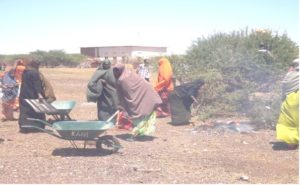Water, Sanitation and Hygiene
 Water: Large sections of the population in South/Central Somalia do not have access to sustainable potable water for both livestock and human consumption. Over half the population lack access to adequate sanitary facilities..
Water: Large sections of the population in South/Central Somalia do not have access to sustainable potable water for both livestock and human consumption. Over half the population lack access to adequate sanitary facilities..
Water: Large sections of the population in South/Central Somalia do not have access to sustainable potable water for both livestock and human consumption. Over half the population lack access to adequate sanitary facilities. The main causes for this situation are linked to poor planning for the development of water sources; inadequate capacity for the establishment, operation and maintenance of sanitation facilities and water points as well as poor access to appropriate technology & skills on water management concepts.
The water infrastructure has also suffered from the local socio-political events of the last decade, with many water facilities having either been looted and or poorly maintained. Hygiene and Sanitation: a small number of households in South/Central Somalia practice appropriate household and personal hygiene due to limited hygiene awareness/ knowledge and or minimal access to waste disposal facilities. Other main challenges include limited sanitation services management; inadequacy of systems for drainage/waste disposal in urban areas; low latrine coverage in the rural areas; lack of hygiene/sanitation policies and regulations and limited hygiene awareness among rural and urban communities. Population displacements often aggravate these situations. Only about 20% of Somali people have access to portable water and are practicing safe means of excreta disposal resulting into high levels of mortality amongst vulnerable.
KAAH relief and development organization carried out several projects of WASH include sanitation project Galagadud region, Guriel district 2013 and others in Mogadishu IDP camps for Healthy promotion activities.
